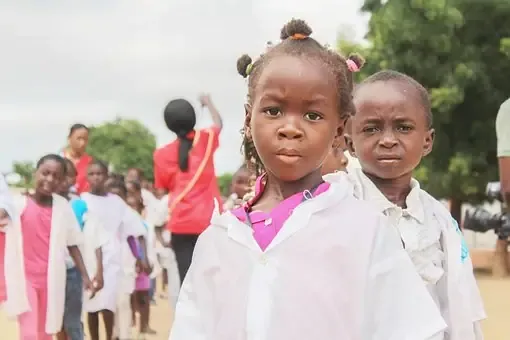African leadership pledges to end AIDS among children by 2030:
 |
| African leadership pledges to end AIDS among children by 2030: |
United Nations agencies have welcomed a pledge by 12 African
countries to end childhood AIDS by 2030, announced at a meeting in the
Tanzanian capital Dar as Salaam on Wednesday.
The first ministerial meeting of the Global Coalition to End
Childhood AIDS calls for all girls and women living with HIV to access
life-saving treatment and for HIV-infected mothers to have HIV-free babies. It
was demanded. Progress was made towards ensuring measures.
Ministers and representatives presented plans to provide
HIV/AIDS testing to more pregnant women, provide them with medical care, and
identify and treat HIV-infected infants and adolescents. Delivery is also
included.
Hope and Heartbreak:
International partners determined how they would help them
achieve these goals. "This meeting has given me hope," said Winnie
Byanyima, executive director of UNAIDS, the United Nations agency leading the
global fight to end the disease.
"I am heartbroken by the discrimination against children
living with HIV and today leaders have pledged concrete action to improve the
situation," he said.
A death every five minutes:
Currently, one child dies of AIDS-related causes worldwide
every five minutes. Half (52 percent) of HIV-infected children are receiving
life-saving treatment, while 76 percent of adults are taking antiretroviral.
This situation has been described by the World Health Organization (WHO) as
"one of the most glaring disparities in the response to AIDS".
Although only four percent of people infected with HIV are
children, they account for 15 percent of all AIDS deaths.
 |
| African leadership pledges to end AIDS among children by 2030: |
Commitments and Contributions:
The United Nations Children's Fund (UNICEF) welcomed the
leaders' pledges and pledged the agency's full support for them.
"Every child has the right to a healthy and hopeful
future, and we cannot leave children behind in the global fight against HIV and
AIDS," said UNICEF Associate Director Amrita Benz.
The Global Alliance to End Childhood AIDS was established in
July 2022 at the AIDS Conference in Montreal, Canada.
At its first ministerial meeting, the Dar es Salaam
Declaration to End AIDS among Children was unanimously adopted.
'No Room for Rest':
Tanzanian Vice President Philip Mango has called for
collective progress on the issue. "We must do our best to end AIDS among
children. The global coalition is a step in the right direction and we must not
sit back. 2030 is just around the corner," he said.
Tanzania is among the 12 countries with the highest HIV rates
to join the Alliance in its first phase.
Other countries include Angola, Cameroon, Ivory Coast, the Republic of Congo, Kenya, Mozambique, Nigeria, South Africa, Uganda, Zambia, and
Zimbabwe.
Early diagnosis and treatment:
The coalition's work will be based on four pillars, including
timely diagnosis and optimal treatment of the disease in infants, adolescents, and adults, and addressing treatment gaps for HIV-infected pregnant and
lactating women. In order to prevent the transmission of this disease to their
children.
Countries will focus on preventing new HIV infections among
pregnant and lactating adult girls and women. In addition, rights and gender
equality will be worked on and efforts will be made to address the main
barriers to HIV/AIDS treatment.
 |
| African leadership pledges to end AIDS among children by 2030: |
Progress is Possible!
UNAIDS believes progress is possible as reductions in
mother-to-child transmission of HIV and/or syphilis have been confirmed in 16
countries and territories.
Although HIV and other diseases can be transmitted to babies
during pregnancy or breastfeeding, they can be prevented by prompt treatment or
preventive measures for at-risk mothers.
Last year, Botswana became the first country in Africa with
high HIV rates to be on track to end vertical transmission of the disease,
meaning one new HIV infection for every 100,000 babies born in the country. The
number is less than 500.
Botswana now has a vertical transmission rate of 2%, up from
10% a decade ago.

Post a Comment